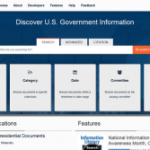In this lesson, students will learn about the powers of Congress, how they have evolved throughout history, and their impact on public policy. Students will view C-SPAN video clips to learn about the types of congressional power and apply that knowledge by developing strategies to improve the effectiveness of Congress.
Lesson Plan: How States Redistrict – The Case of 2022
This lesson plan explores the Congressional and state redistricting processes in several states, including Texas, Florida, Colorado, Montana, Oregon, North Carolina, Michigan, Pennsylvania, New York, California, Illinois, Ohio, and West Virginia. The lesson extends to the legislative, executive, and judicial processes as well as the geographic and demographic considerations of redistricting.
Freedom Summer 1964
Freedom Summer is a digital learning tool (available on the web or as an app) for teachers and students that explores key events surrounding this time in America’s history and the impact of the civil rights movement on civil rights legislation. Players predict the outcomes of civil and congressional actions and discover how the events are intertwined. Students have the opportunity to view informative intro and outro videos and analyze 20 primary sources depicting images of civil rights events. Analysis of a variety of primary sources and supplemental information leads students to identify varying perspectives and potential outcomes. Freedom Summer is formatted for all types of computers and mobile devices, including Chromebooks, and can be found on the website or in any app store for download.
How a Bill Becomes a Law for AP Gov
A lesson plan for one 80-minute class at the AP level. In it students will identify the main steps in the process of creating and passing legislation:
-Explain the significance of party control and committee work in the Congress in the legislative process
-Identify the role that Congressional leaders such as the House of Representatives and the Senate Majority Leader play in the process of agenda-setting
-Identify the role the President plays in the law-making process
-Explain the reasons why the Founders intended the law-making process to be difficult
The Electoral College
Today, the American people vote for president and vice president on Election Day. But, technically speaking, these votes don’t directly determine the outcome of the election. These popular votes determine which electors will be appointed to the Electoral College, which is made up of 538 electors drawn from the states and the District of Columbia. Each state is granted a different number of electoral votes based on the size of its congressional delegation. The electors meet after the general election to cast their votes for president and vice president.
Midterm Elections Matter
This lesson is intended to help students understand that midterm elections (whether they be for congressional candidates, governor, state representatives, or state initiatives) are equally as important as the presidential race every four years.
govinfo.gov

govinfo.gov offers a way to discover and access Government information from the three branches of the U.S. Government. Search or browse more than 50 collections of legislative, executive, and judicial primary source content. Find: Congressional bills, hearings, or the Congressional Record; Executive orders, presidential speeches, and regulations in the Federal Register; Opinions from more than 100 U.S. courts, and more. Use govinfo.gov on any device for official, digital, and secure content.
To Understand a Scandal: Watergate beyond Nixon
Even today, four decades after the events, Watergate still symbolizes all that is, and might be, wrong with the workings of the federal government, elected officials and, ultimately, with the political system itself. Free registration for students and teachers required to access resource.
How Your State Gets Its Seats – Congressional Apportionment
The United States Senate consists of how many members? The answer is fairly simple: with two members apiece representing each of the fifty states, the total is one hundred. How about the House of Representatives? The answer is much more complicated. There are currently 435 voting members of the House of Representatives. How did this number come about and how is the number of Representatives per state determined?
Congressional Power of Impeachment
In the Constitution, the Congress is given the sole power of impeachment and removing the President and all civil officers from office. This power of Legislative Branch provides a significant check over the Executive and Judicial Branches. This lesson provides explanations of the Constitutional basis of the power, the process for removing officials and the history of impeachments and removing these officials from office. It also provides discussions on the standards of impeachments and how those are interpreted by Congress.